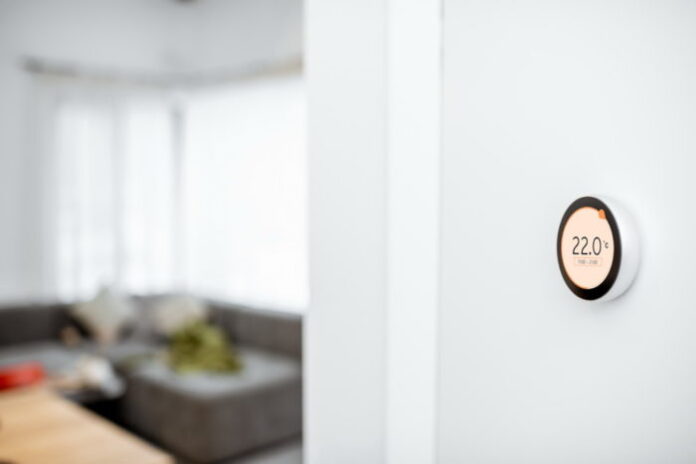Are you old enough to remember when programmable thermostats first hit the market? If so, you probably remember all the promises that came with them. If not, trust the rest of us when we say it was an exciting time. Just the thought of being able to program a thermostat and forget about it was a big deal.
Unfortunately, some 40% of all homeowners with programmable thermostats have never taken advantage of the programmable features to save energy. There could be any number of reasons for this, but the problem is most likely that programming is too difficult. Homeowners do not know how their thermostats work and have no interest in trying to learn.
Enter the smart thermostat. A smart thermostat combines all the promise of its programmable ancestor with new technologies designed around the principle of ease-of-use. If you are among the many homeowners with programmable thermostats that are not actually programmed, you might want to look into switching to a smart thermostat.
Old Programmable Technology

Programmable thermostats have not changed much in decades. The technology on which they are based hasn’t changed much either. A programmable thermostat has a small, built-in chip that serves as data storage. You can program temperature changes by day of the week and hour.
While all this sounds simple in principle, it is anything but simple in practice. Your typical programmable thermostat has only one or two buttons for programming. You have to scroll through multiple menus and settings to make changes. To say that it is tedious is an understatement. The process is also complicated for people who don’t do well scrolling through tiny menus on small monochrome screens.
Throw in the fact that printed instructions aren’t always that helpful and you have a recipe for a programmable thermostat that never gets programmed. You just decide on temperature and hit the ‘hold’ button. You might just as well have a non-programmable thermostat at that point. Thankfully, there are smart options to work with instead.
First-Generation Smart Thermostats

A few years back thermostat manufacturers began to realize that consumers did not know how to use their devices. So they set about creating the first generation of smart thermostats. These were thermostats that still required programming but allowed homeowners to do it using a cell phone. This made them an instant hit with younger people already comfortable with their phones. Just bring up an app and program away.
First-gen smart thermostats are still available today. They typically feature LCD screens that make them look more like smartphones than thermostats. Embedded software makes navigation and programming a lot more intuitive. If you can use a smartphone, you can find your way around a first-gen smart thermostat.
The biggest step up for these new smart thermostats was remote access. By developing companion mobile apps and wi-fi connectivity to go along with their thermostats, manufacturers gave consumers the ability to control the temperature in their homes from virtually anywhere.
Leaving work early because you’re not feeling well? Bring up your thermostat app and override the programming so that your house is toasty warm upon your arrival. Staying out late? Use your phone to adjust the temperature at home so the furnace stays off for a few more hours.
Second-Generation Smart Thermostats

First-generation smart thermostats were a vast improvement over their programmable predecessors. Second-gen smart thermostats are better still. Why? Because artificial intelligence gives them simulated learning capabilities. Vivint Smart Home refers to second-gen smart thermostats as ‘learning’ thermostats.
A learning thermostat still requires basic programming. You set it up to adjust the temperature based on your normal activities and lifestyle. However, rest assured that basic programming is by no means tedious or complicated. It doesn’t need to be because the thermostat does most of the heavy lifting.
Once a basic program is set, you simply forget about it and go live your life. Artificial intelligence built in to the thermostat allows the device to monitor temperature changes and when these occur. The thermostat can also monitor activity in the house. All the data the device collects helps it learn your lifestyle and routine. It can then automatically adjust the temperature accordingly.
How does it work? By interacting with a variety of sensors in a smart home system to actually detect activity in the home. The entire system collects data from light sensors, motion sensors, etc. to figure out patterns of activity. The data is then analyzed by the artificial intelligence system to determine optimal temperature settings suitable for your lifestyle.
Even if you don’t have a complete home automation system with dozens of sensors, a smart thermostat is still capable of learning to some degree. It can collect data from your programming as well as your manual overrides to determine your typical lifestyle patterns.
Time to Get Smart

Programmable thermostats were all the rage back in the day. They were considered advanced technology for the time. However, no technology is worthwhile if people do not know how to use it. If you find yourself with a programmable thermostat you don’t utilize, it is time to get smart.
Modern smart thermostats are more than just programmable. First-generation smart thermostats are more user-friendly thanks to intuitive UI’s and companion mobile apps. A first-gen thermostat is as easy to program is using any other app on your phone. With a Wi-Fi connection, you can access your thermostat from anywhere.
Second-generation models are both programmable and remotely accessible. They can even learn your lifestyle and schedule so as to automatically adjust without your help. Just program the thermostat once and forget about it unless you need to manually override programming for some reason.
So what do you think? Are you ready to say goodbye to that programmable thermostat you never use? Step up and go smart. You should find your home more comfortable and efficient. You’ll actually start saving the money you had planned to save when you bought your programmable thermostat.









